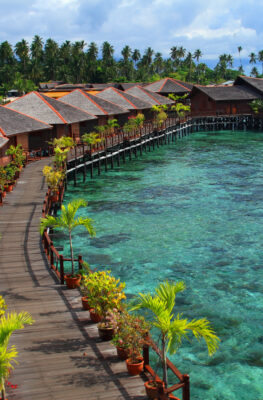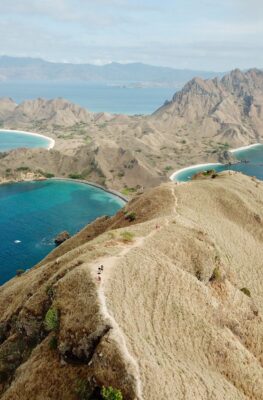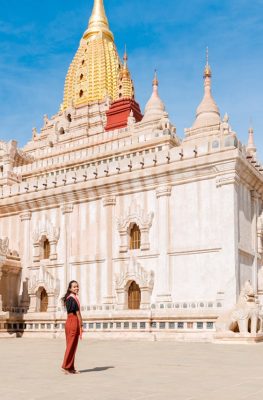Published on May 1, 2015
Irrespective the geographic area or country of interest, a tourist browsing through a guidebook almost certainly will come across what is called a “World Heritage Site”. This is a cultural or natural heritage considered by UNESCO to be of ‘outstanding value to humanity’ and as such an appealing tourism destination. To date, some 1,000 have been recognized globally; henceforth, inscribed on the institution’s list of “World Heritage Sites” (WHS). 35 more have been nominated by UN member states for review in 2015.
Although ASEAN member states cover a modest portion of that list only, it is more than likely that tourists intending to visit South East Asia have marked one or more of the 36 World Heritage Sites within the region as “must see” attraction. Not in the least as some have a reputation going far beyond its borders, e.g. Ayutthaya (Thailand), the Borobudur (Indonesia), Angkor (Cambodia), Luang Prabang (Laos), the Rice Terraces of the Cordilleras (Philippines) and Ha Long Bay (Vietnam).

Rajburana Temple, Ayutthaya province, north of Bangkok, Thailand; Source: http://walltor.com
Others may have a more regional reputation, while a few are somewhat under the radar, due to a less accessible location or being inscribed on the WHS list recently, only. It’s these last ones, those a bit off the beaten track that will be brought over the limelight in a few articles, covering one secluded WHS for each of 7 ASEAN countries. (Brunei and Singapore don’t feature on UNESCO’s list so far, whilst last Vietnam’s sites have been reported on extensively).
CAMBODIA. The country foremost is renowned for the Hindu temple complex of Angkor, housing the remains of the Khmer Empire from the 9th to the 15th century. It is one of South East Asia’s most famous archaeological sites, with Siem Reap airport receiving more than 3 million foreign and domestic visitors in 2014. It remains a, if not the, major tourism draw of Cambodia.
Involuntarily, that puts another impressive WHS, sanctified to the Hindu deity Shiva, “the Preah Vihear Temple” a bit in its shadows. The temple, with a history going back as far as the 9th century, was completed in the first half of the 11th century. It is magically positioned on the border of a highland towering above Cambodia’s valley. Due to its relatively out-of-the-way location it has been conserved exceptionally well, the refined design (partly in ornamental ‘Banteay Srey’ style) adjusted to the physical environment and spiritual purpose of the sanctuary.
Although entrance via Thailand is more convenient (the temple is on the natural border of both countries), it’s absolutely recommended to take the adventurous route from within Cambodia, worthwhile the vigorous effort to get there. From Siem Reap (via Kompong Thom or Koh Ker) it will take you anything between ‘4 to 5 hours’ and ‘a couple of days’, pending means of transport.
INDONESIA. Like Vietnam, it has 8 World Heritage Sites as fame to claim, equally divided between cultural and natural heritages. Its most legendary being the “Borobudur”, a Buddhist temple; to a lesser extent its Hindu temple complex “Prambanan”, in the same area as the former. Both cultural monuments are steeped in Indonesia’s history and inscribed as WHS by UNESCO in 1991. That very same year both, “Komodo National Park” (lodging the illustrious Komodo Dragons) and “Ujung Kulong National Park” were added to UNESCO’s WHS list.
Tourists who have visited Bali quite often are surprised if told that the island also houses an important WHS, “The Subak System”, recognized in 2012. It is a collaborative water management system of channels and levees that characterizes Bali’s landscape to great an extent, and of which water temples were its focus.
Lesser known might also be the “Sangiran Early Man” site. However, probably Indonesia’s largely unknown WHS would be “Mount Lorentz National Park”[1] The reason obviously being its far flung exotic location, the province of Papua, far away from mainstream tourism.
While the upper most part of this vast province might be well-known amongst divers for its most pristine and vastly bio-diverse realm of islands, called Raja Ampat, another natural and tourism jewel goes by almost unnoticed. This despite its declaration as WHS going back fifteen years and being the largest protected area in South East Asia (over 2 million ha; stretching for over 150 km from Irian Jaya’s central cordillera mountains in the north to the Arafura Sea in the south).
The park comprises the main concentration of biodiversity in the region and is the world’s only shielded area to unite a nonstop cut across from snow-capped mountains (the highest peak coming close to 5,000 meters) to tropical maritime setting. Fossils were unearthed supporting confirmation of the progression of life on New Guinea.
The area encompasses a rich cultural variety with seven indigenous ethnic groups maintaining their long-established semi-nomadic lifestyle with basic agriculture.

Mount Lorentz National Park, Papua province, Indonesia; Source: http://thousandwonders.net
Especially for nature, bird and animal lovers, it’s the recommended place to go. Mount Lorentz National Park is home to more than 630 species of birds and 123 species of mammals. 70 percent of all bird species in Papua can be traced in this park, alone. This include the famous, but rarely spotted, birds of paradise, tree kangaroos and pig nose turtles.
Starting points could be the slightly more touristic destinations, Biak Island, the Baliem Valley (Wawema) or Jayapura. Best time to visit from August to December.
Malaysia. Three of Malaysia’s four World Heritage Sites are easy accessible and either a tourist attraction in itself (“The Historic Cities of the Straits of Malacca, Melaka and Penang”) or in quite proximity of a major tourism destination: on the mainland (“Archaeological Site of the Lenggong Valley”; Kuala Lumpur) and on Borneo (“The National Park of Kota Kinabalu”; Sabah). Though less remote than Mount Lorentz National Park and the Preah Vihear Temple, Malaysia’s fourth WHS, “Gunung Mulu National Park” could be considered the most far-off Heritage Site of this country. It is situated in the north eastern part of Sarawak on Borneo.
At 529 sq. km the state’s largest national park, it is encircled by three mountains (Mulu, Api and Benarat) and offers unspoilt wilderness with ample opportunities for wildlife viewing, caving, rafting and jungle trekking with overnighting in real expedition camps. The park has an exceptional level of biological diversity with over 3,500 species of plants recorded and 109 palm tree species. It accommodates one of the world’s largest limestone cave systems where at night more than three million bats find their home. Quite a phenomenon to watch them flying out at sunset. Hard-core cavers consider Gunung Mulu Park with its 295 km of already explored caves as the pinnacle for caving since it contains some of the largest and most spectacular grottos in the world.

ER Wang Dong Cave, Gunung Mulu Park; Sarawak; Source: http://placesfortraveling.blogspot.com
Many more animals come to life at night-time, outfitted with first-rate concealment skills or live high in the tropical rain forest. This is why the park created two short trails, a canopy sky walk and a night walk trail. Both are well-marked, self-guided trails that provide close-up encounters with insects, lizards, orchids, squirrels, and butter-, fire- and dragonflies, to mention a few. Sightings of shier animals, such as deer, monkeys, civets and Borneo’s hornbills are more limited due to their disposition and habitation.
Due to the thickness of the rainforest, rivers form the principal mode of transport and trekking itineraries, adding to the ‘far-away of it all’ feeling of the area.
Cambodia’s Preah Vihear Temple, Indonesia’s Mount Lorentz and Malaysia’s Gunung Mulu Parks All three requiring a healthy dose of stamina to reach and explore, But in no small matter adding to an exceptional experience
The remaining Indonesian World Heritage Sites are “Ujung Kulon National Park (1996)” and “Tropical Rainforest of Sumatra (2004)”. Those missing the fascinating “Tana Toraja” community and its burial ceremonies should not worry, the site has been submitted to UNESCO in 2009; subsequently added to UNESCO’s Tentative Countries’ Lists of potential WHS.






